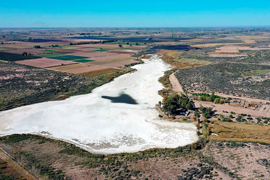The peri-urban wetland landscape in land use planning. The case of the Arroyo Leyes-Tulumaya System (Mendoza, Argentina)
DOI:
https://doi.org/10.15381/espiral.v4i8.24274Keywords:
Landscape, urban-rural interface, Wetland, Regional land use planningAbstract
There is a tendency to recognize wetlands as natural spaces of great value, although in proximity to cities and peri-urban areas, cultural aspects requires attention for their management and valorization. For this, the study of wetlands in terms of landscape would allow a better understanding of the articulation between natural and cultural variables. The objective is to characterize the landscape of the Arroyo Leyes-Tulumaya wetland system and investigate its values, to promote its recognition and incorporation into land use planning actions. Through a triangulation of methods and techniques, is characterized the historical and current site and in the study of its natural and cultural values. In the official documents for the protection of the site, the natural value is prioritized over the cultural ones, which affects the development of territorial policies in accordance with reality for its proper conservation. Based on the results, a series of considerations are provided to be taken into account for land use planning, which attends to social, economic and ecological benefits. The conclusions point to the importance of water management as a scarce natural asset in drylands, as well as the leading role of the local population in landscape planning.

Downloads
Published
Issue
Section
License
Copyright (c) 2022 Matías Esteves

This work is licensed under a Creative Commons Attribution 4.0 International License.
LOS AUTORES RETIENEN SUS DERECHOS:
a. Los autores retienen sus derechos de marca y patente, y también sobre cualquier proceso o procedimiento descrito en el artículo.
b. Los autores retienen el derecho de compartir, copiar, distribuir, ejecutar y comunicar públicamente el artículo publicado en la revista Espiral (por ejemplo, colocarlo en un repositorio institucional o publicarlo en un libro), con un reconocimiento de su publicación inicial en la revista Espiral.
c. Los autores retienen el derecho a hacer una posterior publicación de su trabajo, de utilizar el artículo o cualquier parte de aquel (por ejemplo: una compilación de sus trabajos, notas para conferencias, tesis, o para un libro), siempre que indiquen la fuente de publicación (autores del trabajo, revista, volumen, número y fecha).














